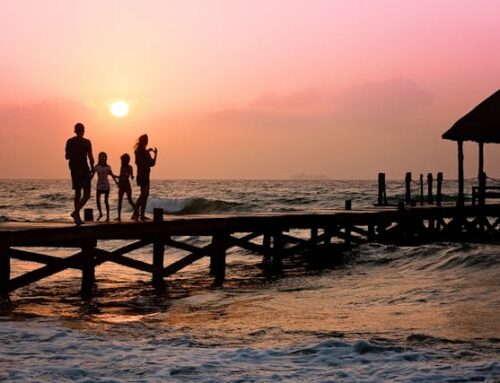5 Top Tips For Visiting New Orleans on a Budget

5 Tips for Traveling to New Orleans on a Budget

Founded in the spring of 1718, New Orleans will be celebrating its 300th anniversary for all of 2018. That makes the Crescent City one of the oldest cities in the United States. The city was founded by French explorers and named for the Duke of Orleans. As the city grew over hundreds of years, it was occupied by the French, Spanish, and the United States. That has created one of the most unique places in America. The culture of the city blends hundreds of years of history. The most notable locations in New Orleans are typically the historical sites such as Bourbon Street and Jackson Square. However, travel to this historic city can be somewhat pricey. Fortunately, there are a few ways to keep your expenses low and the good times high.
- Stay in the Suburbs
When you travel to New Orleans, the obvious urge is to stay as close to the action as possible. You want to be right in the thick of the French Quarter, Central Business District (CBD), and all of the great venues therein. However, for a city with such an outsized cultural impact, it’s not actually very large. Nestled in a crescent of the Mississippi River, it has never had much space to expand geographically. That means that a trip into the heart of the city from the suburbs is usually just a quick drive down I-10 or over the Crescent City Connection bridge.

This is an especially great option for anyone who drives into New Orleans. The nearest suburbs are Metairie and the area known collectively as the West Bank for its location on the western bank of the Mississippi River. The hotels and short-term rentals in Metairie or the West Bank will likely cost you much less than staying right in the French Quarter. Furthermore, it’s only about six miles from Metairie to the French Quarter. I-10 travels right from the suburbs into the heart of the city; you can jump off the interstate and be right on the edge of the French Quarter. Parking in Metairie is going to be much easier as well; as any NOLA local will tell you, the lack of off-street parking in most of New Orleans makes moving your car a nightmare.
2. Consider Camping
As stated earlier, New Orleans is pretty tightly packed into a crescent of the Mississippi. That means that it’s mostly urban jungle and very little actual jungle. However, there are still some great RV and camping spots around the city. If you want to stay right in the city itself, you’ll likely be able to find some very affordable RV parks. While there is not a lot of rolling forest (being below sea level makes for some swampy camping), there are a good amount of places that will allow you to park an RV. They have utilities hook-ups, which means that you’ll get gas, water, and electricity. Since you’ll be in your own RV, you can control where you go and how you cook your food. Studies have actually found that RV travel will cost you about 33% less than staying even in a budget motel. Roughing it out in the woods can save you even more.
The best camping spots in New Orleans are actually just outside of the city, where the ground is a little bit higher and drier. Fortunately, as already stated, a quick drive into the city for fun and food shouldn’t take you more than a few minutes. When you go camping in New Orleans, especially if you go travelling with kids on a budget or camping with kids, especially on a budget, you’re going to experience a few unique headaches. Be prepared by checking out this list, and you’ll have a great time camping around the City that Care Forgot.
3. Explore More Than the French Quarter
The French Quarter is one of the oldest parts of the city. The city began as a port town, and the various workers needed somewhere to stay. A city was built up along the river’s edge. Interestingly, the French Quarter is not the most French part of the city. A fire in the late 1700s burned most of the city, and the Spanish rebuilt it. Therefore, the French Quarter should really be called the Spanish Quarter. While it is an incredible part of New Orleans full of music, entertainment, and incredible food, the city has much more to offer.

As you explore outside of the French Quarter, you’ll first encounter Frenchman Street. It begins on the opposite side of Esplanade Avenue from the French Quarter. It features much of the same incredible music, food, and fun as the Quarter but everything is priced a little more for locals. That means, the prices are a little lower. Furthermore, you can get a true local experience by traveling down St. Charles to the Marigny and the Bywater. The local musicians and local chefs can give you a taste of unfiltered New Orleans the way New Orleanians experience it. New Orleanians are pretty exacting, too; they like great food, great music, and they don’t like high prices.
4. Schedule Your Meals
The Crescent City is known for the quality of its Cajun and Creole food. Yes, there is a difference. If you don’t know the difference, that’s perfectly fine. The easiest way to discern the two is that Creole food has tomatoes in it; you can remember this because Creole tomatoes are some of the most delicious tomatoes in the Southeast. However, you’re going to pay a good amount of money for that food if you don’t shop around.
Most restaurants, big and small, have their menus online. You should make sure you schedule meals at some of the most iconic New Orleans restaurants like Commander’s Palace, Toup’s Eatery, and anything else you’ve seen on a cooking show. However, to keep your expenses low, you should also frequent some local New Orleans websites. They’ll direct you to places that are well-known to locals and not quite as pricey. If you get caught out without a meal plan, you might end up spending more than you bargained.
5. Check the Calendar

It cannot be overstated how important it is to check the calendar before you plan your NOLA trip. Locals insist that there is a festival every weekend in New Orleans. While that’s not true, the sentiment is definitely understandable. New Orleans plays host to dozens of conferences, music festivals, and sports events every year. Those are going to pack the hotels, jam the streets, and clog up dinner reservations. If you’re flexible with your scheduling, you would be better off scheduling a trip when there are no major events.
These five tips will help you visit New Orleans on a budget. The city is not very expensive in the first place; proper planning can make it extremely affordable.
*********************************
About The Author: Nigel William writes about travel, camping, gardening, DIY, woodworking and his other interests.
*********************************
Image Sources: Pixabay, Google Maps, Flickr





